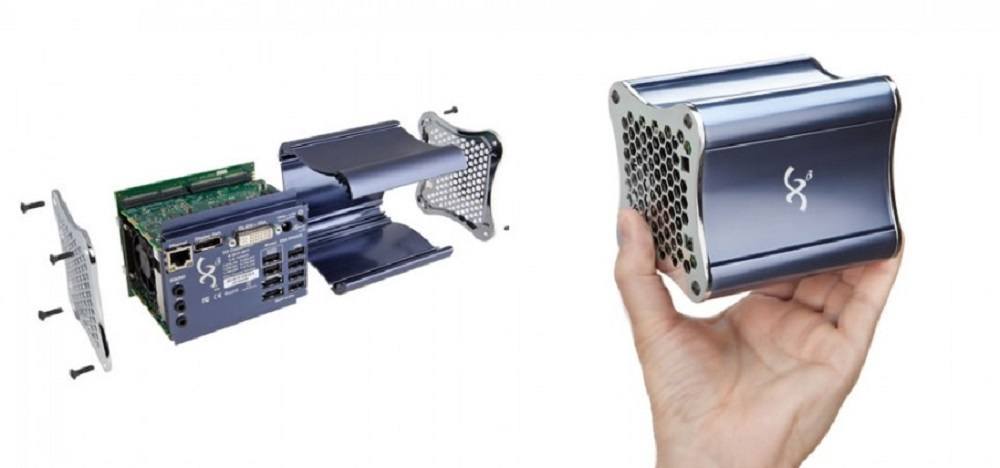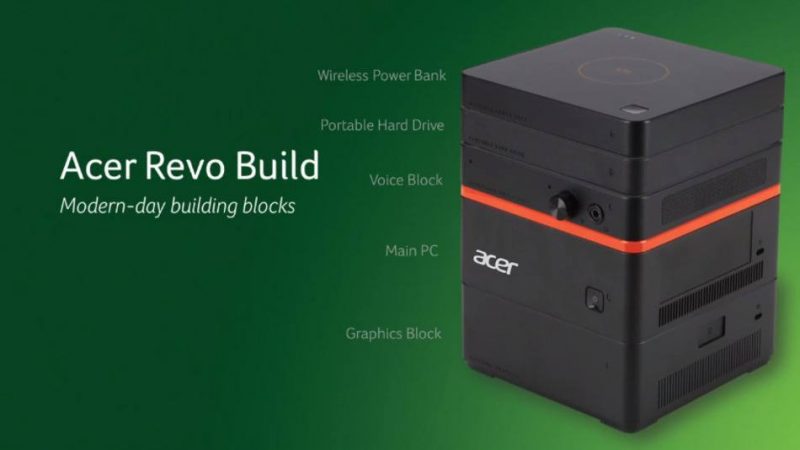
We know what everyone says about change. Change is the real constant. Change should be accepted. The earlier it’s accepted, the better off we’ll be. Better off, isn’t always the case. Ask the folks in Syria. But what if it is? Remember when computers were large terrifying machines encased in white or beige boxes having nothing but a blinking white prompt on the screen? Booyah! Change. PCs are now colorful things of various shapes and sizes, some as small as a pack of gum, others decked in translucent, colorful cases, others shaped like cylinders, modded inside Star Wars Millennium Falcon and AT-AT Walker toys, and a lot of them are now in our hands in the form of tablets and smartphones. Who’s scared of computers now?
Another change looms on the horizon which aims to make PCs friendlier to upgrade and more cost-effective for both homes and the enterprise. PCs may become modular meaning that parts can be interchanged and upgraded as needed. The pieces stacked like Lego bricks but still look attractive. That’s one heck of a change. The concept is similar to Google’s Project ARA.
Google‘s Project ARA is a concept cellphone where users can replace cellphone parts as needed. For example, users can buy a base model having a 1.5GHz quad-core processor, 5 rear megapixel camera and 1GB RAM. Users can later replace the current 5MP camera with a newer 14MP just by removing a rectangular module at the back of the phone. Replace a standard LED screen with AMOLED? Pop the screen off and it’s good to go. Replace the processor? Open the back, take out the processor box and plug in a newer one. Replace the RAM, same process as the processor. Android would need a plug and play subsystem for that if it doesn’t already.
The same can be true for PCs. Microsoft has recently patented some designs for a modular computer that can combine a base module, a tablet as the screen, additional processing and storage and will possibly include Kinect and Hololens components. The base module will have protrusions and slots and latches to hold various components. It would be great if additional RAM can be added in slots without having to open the lousy case. Stuff like speakers and projectors can easily be attached as well as battery packs making a mobile setup possible.
Modularity in PCs is nothing new. If I remember correctly, there was a machine by Sun Microsystems, which has already dabbled on modularity with its Sparc Stations. Other manufacturers also tried back in the day. Acer currently has something in the works called the Revo Build Mini PC. Not sure if they patented the idea as Microsoft has. The Revo Build will also come with a base module wherein the user can stack extra storage, power and graphics on top of the base. Extra RAM, however, can be added to the base module itself while everything else can be stacked. The Revo line won’t hit the states immediately, but when it does, that’s competition for Microsoft.
But will Microsoft make its patent a reality or watch Acer from the sidelines and see if the idea sticks? Did Microsoft get the idea from Acer? Which predated which? Their respective patents can be differentiated by implementation anyway. As mentioned, modularity is nothing new.
If modularity is nothing new then why didn’t it take off? Despite its merits, technology was just too fast. The architecture of their respective base modules could suddenly be replaced by something better. Some new data connection/transmission standard could suddenly come out and deprecate part or all components of modular setups.
It’s just that PC architecture changes prohibit modular computers from being a viable concept. Processors get better requiring a change in slots from X pins to Y pins. Expansion went from ISA to EISA to PCI to PCIE requiring a change of slots. The same goes for the number of pins required for RAM chips. So PC users who want to upgrade a five-year-old computer to the latest processor may have to change motherboards, change RAM leaving only the hard disk as the original component.
What’s needed for modularity to work is an architecture with fast, standard connection methods that can fight obsolescence for the next ten years or so. The closest thing to such a connector is the ubiquitous USB. Type A connectors for USB haven’t changed since version 1. It’s now version 3, and we still see a lot of type A connectors. The difference is the speed of data transmission. USB 1 is of course, way slower than USB 3. For processors, the original Intel Pentium 2 had the right idea in using a PCI-like slot instead of pins. The slot can remain unchanged while the component holding the processor can worry about the number of processor pins as long as the data transfer rate of the slot remains greater than that of upcoming processors. The same goes for RAM and graphics.
Microsoft’s Modular PC concept may be nothing new, but as they shown us before with the Surface Book, Redmond may have something up its sleeve to differentiate itself or even create a whole new standard like it often does. Again, it would be great if we can upgrade and configure our PCs as easily as popping out batteries of our cellphones, something which everyone can do.


